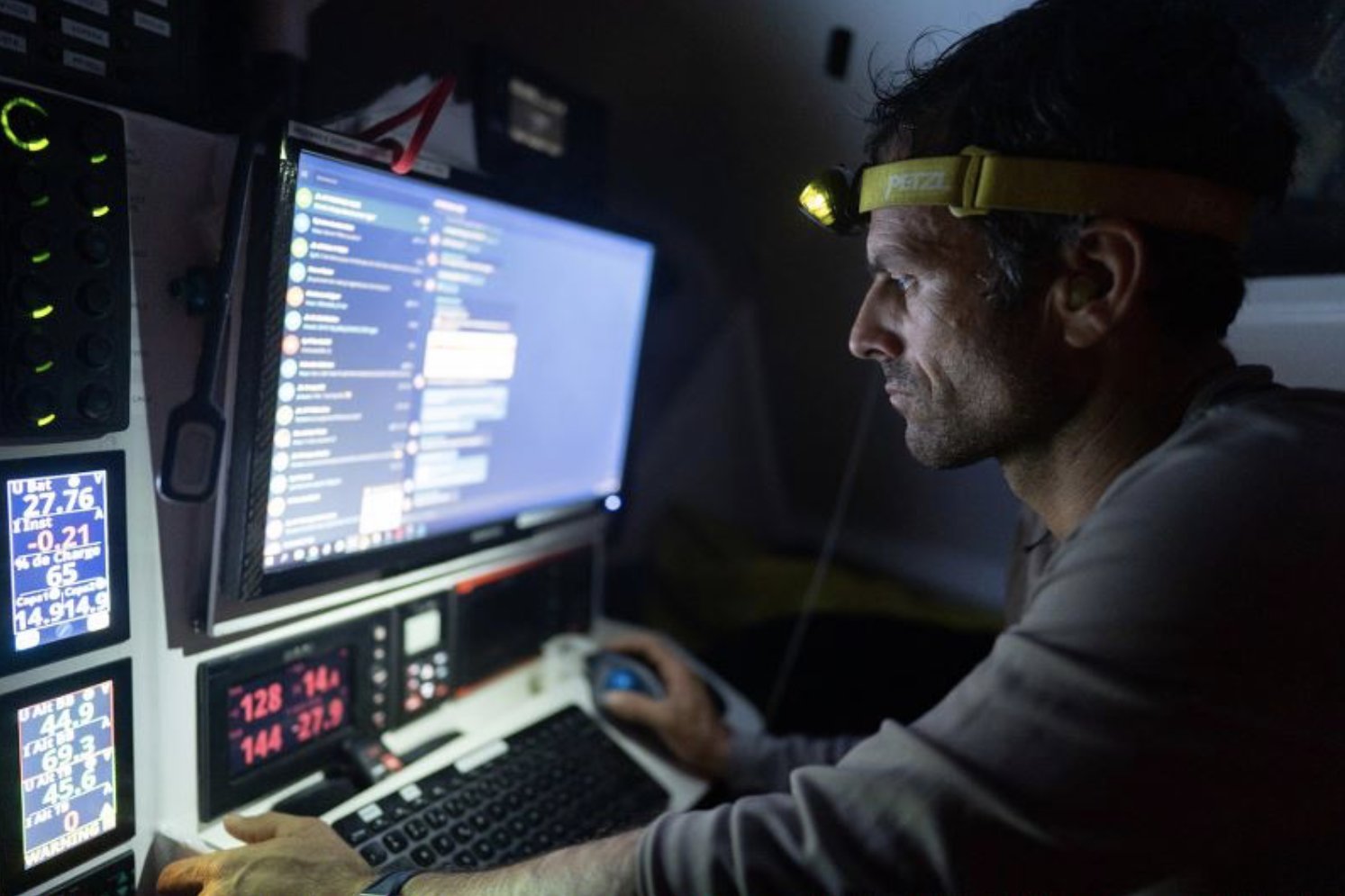

Since passing offshore of Cape Verde yesterday morning, the Maxi Edmond de Rothschild has been slipping along at a fair old lick in the trade wind of the northern hemisphere, on a direct course to the equator. However, for the past few hours, the six sailors that make up her crew have been experiencing a slight change in weather pattern. In fact, at 6° North, the intertropical convergence zone is making its presence felt ahead of the bows of the 32-metre giant and with it comes a whole bunch of the weather hazards so renowned and dreaded by the sailors traversing the area. After four days at sea in this Jules Verne Trophy, Franck Cammas, Charles Caudrelier and their four crew are attacking the doldrums with a 143-mile lead over the current record.

The hand of fate
Last night, before suffering the first effects of the doldrums, Yann Riou concocted a very vivid picture postcard of their high-speed passage in the trade wind. “There’s no doubt we’re under the tropics!” quips the crew’s onboard media man at the start. “All’s well aboard. Conditions over the past 24 hours have been fairly easy. I did a short watch yesterday evening and there was a whole procession of flying fish. They were passing onto the trampoline and under the trampoline. They were taking off at the bow and landing at the back of the boat. We can see sargassum too… The water temperature has increased considerably! So why am I talking to you about the water temperature? Because that’s what you can feel inside the boat. And that’s not a very nice aspect of it because the central hull is really very hot… a fairly muggy heat. It’s not always easy to rest and get off to sleep in these conditions. That said, it’s very pleasant on deck and well ventilated. Right now, we’re in little T-shirts and are currently making 35 knots, 37 even under autopilot. We’ve hardly used the autopilot since the start but it’s working well here. We’re making headway towards the doldrums and we’re keen to see what fate has in store for our passage. At this exact moment we’re making 38, 40 knots! It’s pitch black and cloudy and we have the radar on to keep watch and look at what’s going on ahead a little. We’regoing very fast and the sea has flattened out nicely enabling us to make the most of the boat’s true potential.”
Indeed, in the past 24 hours, the flying maxi-trimaran has been racking up an average speed of 32.5 knots, which equates to nearly 800 miles covered along the course. However, this Thursday 14 January won’t be coloured by the same pace. Though the environment continues to change in the ITCZ and it’s always difficult to predict the upcoming weather conditions, despite the quality of the forecasts and the expertise of the team’s weather router, Marcel van Triest, the name of the game is always the same for him. It’s all about finding the best possible passage through, namely the area where there is still some breeze, whilst targeting an exit point that’s not too far west so we maintain a favourable angle of attack to enter the southern hemisphere.
A first record possible?
The first intermediate record of this round the world, approved by the WSSRC, is that between Brest and the equator. Today and since 2019 it has been the property of the Swiss team of Spindrift Racing with a time of 4 days 19 hours and 57 minutes. With what seems like an active intertropical convergence zone still to negotiate, this reference time looks like a tough ask for the men of Gitana Team. However, with the doldrums you can’t be sure of anything so there’s always hope… To achieve that, Charles Caudrelier, Franck Cammas, David Boileau, Yann Riou, Erwan Israël and Morgan Lagravière would have to make the switch into the south and cross the virtual line between the two hemispheres before 21:30 UTC this evening!